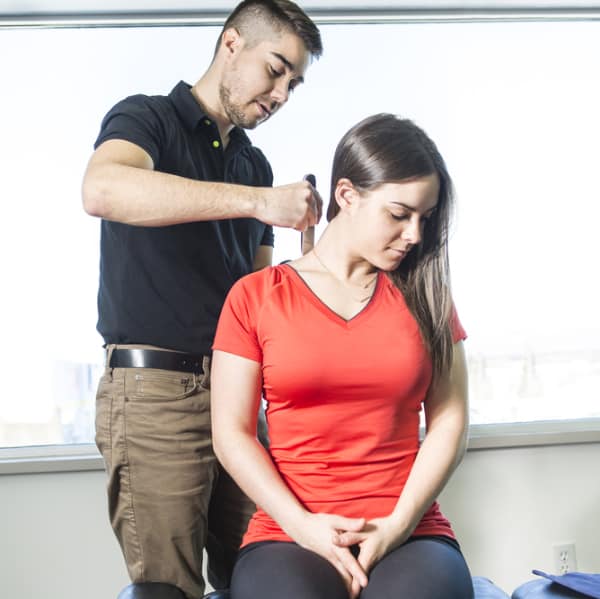Introduction
In today's fast-paced world, where office work dominates the professional landscape, posture correction has become a hot topic. With many of us spending hours hunched over computers or slouched in chairs, the impact on our health is undeniable. Poor posture can lead to a myriad of issues, including chronic pain, decreased productivity, and long-term musculoskeletal disorders. But fear not! This comprehensive guide aims to provide you with the best practices for posture correction tailored specifically for office workers.
Why Is Good Posture Important?
Good posture isn't just about looking confident; it plays a crucial role in our overall health. Maintaining proper alignment helps reduce strain on muscles and ligaments, allowing them to function efficiently. Additionally, it supports optimal breathing and circulation, ensuring that oxygen-rich blood reaches vital organs and tissues.
Table 1: Benefits of Good Posture
| Benefit | Description | |-----------------------------|--------------------------------------------------------| | Reduced Pain | Less strain on muscles and joints | | Increased Energy | Improved circulation boosts energy levels | | Enhanced Focus | Better oxygen flow can enhance cognitive function | | Greater Confidence | Good posture exudes confidence and professionalism | | Overall Health Improvement | Regularly practicing good posture promotes general well-being |
Posture Correction: Best Practices for Office Workers
When it comes to improving your posture at chiropractic frisco work, it’s essential to integrate small changes into your daily routine. Below are some tried-and-true methods every office worker should consider.
Understanding Your Workspace
Ergonomic Setup: What Does It Mean?
An ergonomic workspace is designed to fit the user's needs by minimizing strain and maximizing comfort. This includes:
- Chair Height: Your feet should rest flat on the floor. If not, use a footrest. Desk Height: Your elbows should be at a 90-degree angle while typing. Monitor Position: The top of your monitor should be at eye level to avoid neck strain.
Choosing the Right Chair
Opt for an adjustable chair that provides proper lumbar support. Look for features such as:
- Adjustable height Sufficient cushioning Armrests that can be raised or lowered
Daily Habits That Promote Good Posture
Regular Breaks: Why Are They Necessary?
Taking short breaks every hour helps reset your body’s position. Stand up, stretch, or take a brief walk around the office.
Stretching Exercises for Office Workers
Incorporating simple stretches into your day can work wonders:
- Neck Stretch: Tilt your head toward one shoulder while keeping the opposite shoulder down. Shoulder Rolls: Roll your shoulders forward and backward to relieve tension.
Mindfulness and Body Awareness
Recognizing Bad Posture Habits
Become aware of your body positioning throughout the day. Are you slouching? Leaning forward? Acknowledging these habits is the first step toward correction.
Using Reminders for Posture Check-In
Set reminders on your phone or computer every hour to check in on your posture. When you receive a notification, take a moment to adjust how you’re sitting or standing.
Technology Aids for Better Posture
Posture Correction Apps: Do They Work?
There are several apps available that provide real-time feedback on your posture using your device's camera. These apps can help you stay conscious of how you carry yourself throughout the day.
Wearable Devices: The Pros and Cons
Consider investing in wearable technology designed to improve posture. Devices that vibrate when you slouch can serve as effective reminders but ensure they’re comfortable enough for all-day wear.
The Role of Fitness in Posture Correction
Strengthening Core Muscles
A strong core supports good posture by stabilizing your spine. Incorporate exercises like planks, bridges, and abdominal crunches into your fitness routine.
Flexibility Training: Why It Matters?
Flexibility is key in maintaining good posture. Regularly practice activities such as yoga or Pilates to improve flexibility in tight muscle groups often associated with poor postural habits.
Common Misconceptions About Posture Correction
Is Slouching Really That Bad?
Absolutely! Slouching places unnecessary stress on the spine and surrounding muscles leading to discomfort over time.
Can Sitting All Day Be Good For Me If I Have Good Posture?
Even with good posture, prolonged sitting can have negative effects on overall health. It's crucial to balance sitting time with movement throughout the day.


FAQs
1. What are some quick tips for improving my office posture?
Answer: Adjust your chair height so that feet rest flat on the ground; keep monitors at eye level; take breaks regularly; incorporate stretching exercises throughout the day.
2. How often should I take breaks?
Answer: Aim for a break every hour; even short breaks of 5 minutes can significantly reduce muscle fatigue and improve circulation.
3. Can poor posture affect my mood?
Answer: Yes! Studies show that slouching can lead to feelings of sadness or fatigue due to its impact on energy levels and body chemistry.
4. Are there specific exercises I can do at my desk?
Answer: Absolutely! Try seated leg lifts, shoulder shrugs, or wrist rotations without leaving your desk.
5. Is it too late to correct my bad posture?
Answer: It's never too late! With consistent effort towards awareness and practice of good habits, significant improvements can be made at any age.
6. How long will it take to see results from correcting my posture?
Answer: Results vary from person to person but typically within weeks of consistent practice; many notice improved comfort levels and reduced pain.
Conclusion
In summary, "Posture Correction: Best Practices for Office Workers" highlights essential strategies every office employee should embrace—be it ergonomic adjustments in their workspace or incorporating movement into their day-to-day activities. Remember that change takes time; patience is key when working towards better habits!
So go ahead—implement these tips today! Not only will they enhance your comfort at work but also contribute positively towards your overall health and well-being in the long run.
This article aimed to provide extensive coverage of how office workers can correct their posture effectively through lifestyle changes tailored specifically for their unique work environments while addressing common concerns along the way!